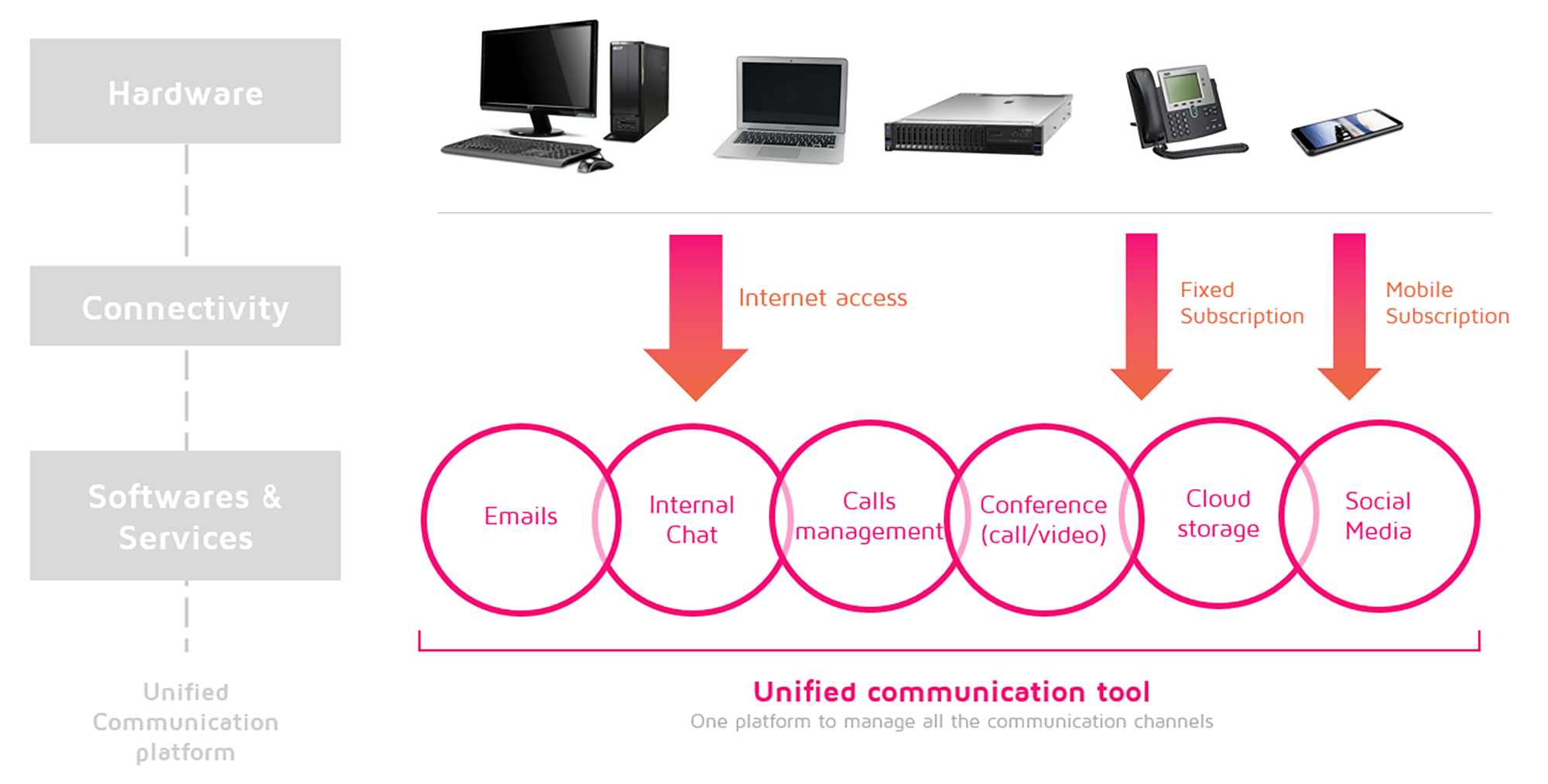All IT businesses are pursuing an ideal: providing the perfect working environment. As an IT provider, you want to create a working environment where communication between employees is made perfectly fluid. Telephone, emails, storage, social media, chats... All tools must communicate in a seamless manner.
This vision, perhaps a little utopian, often appears under the term “unified communications”. All tools are synchronized in one and the user navigates effortlessly. Naturally, this involves hardware as much as software in a complex choreography. Complex enough to give serious headaches to our dear “IT Managers”.
Covering the entire spectrum of telecoms
For an IT provider, offering unified communications means providing the entire scope of modern communications.
In terms of hardware, there are multiple components: desktop / laptop, landlines, cellphones, servers, boxes (or other internet connections), etc.
In terms of software and services: fixed subscription, mobile subscription, instant messaging, conferencing tool (audio+video), cloud storage, social tools… And potentially much more!
Question is: do you currently cover all those need? More specifically, do you offer a tool allowing all these components to inter-communicate? Which scenarios are you able to implement to make the different channels communicate with each other? How do you synchronize them? The UC tool is especially conceived to orchestrate all those components.

Examples of unified communications scenarios
For example, an IPBX allows the creation of a “telephonic intelligence”: transferring calls, making group calls, managing telephone numbers, creating sequenced ringtones, easing remote-working, etc.
Certain cloud tools aggregate all the tools onto one platform: landline, cellphone, instant messaging, video-conferencing, audio-conferencing, email, social media, drives, etc. Your clients can, for example, generate telephone conferences from a cellphone app, which can be joined from any landline or any PC. They can read their emails during the meeting, from the app. They can share files from their drives or events from the team calendars without leaving the conference.
To enhance mobility, users can redirect their calls to their landline or their cellphone depending on their needs. While travelling they can make a call from their cellphone while displaying their office landline. An ultra-mobile employee can download his profile (directory, scripts, numbers) onto any fixed phone. Etc.
Making the 360° offer:
To implement a complete unified communication, it is preferable to be at once the access provider, the fixed operator and the mobile operator of your client. From then on, absolutely any scenario is possible by adding a UC tool, like BroadCloud by Legos. You will finally be providing a true business ecosystem, delivering your promise: a 360° IT service!
About Legos: Legos is an expert in creating fixed and mobile operator. We help our clients in their UC by implementing BroadCloud by Legos on top of their mobile and fixed offers.